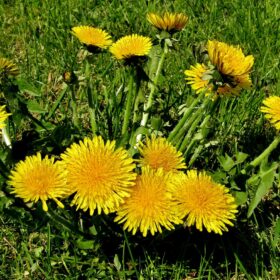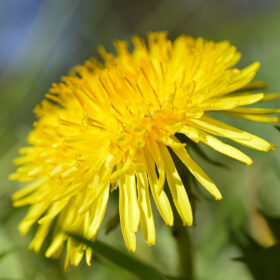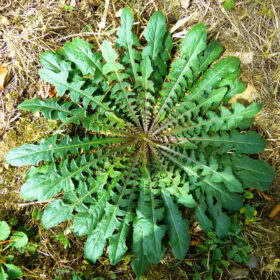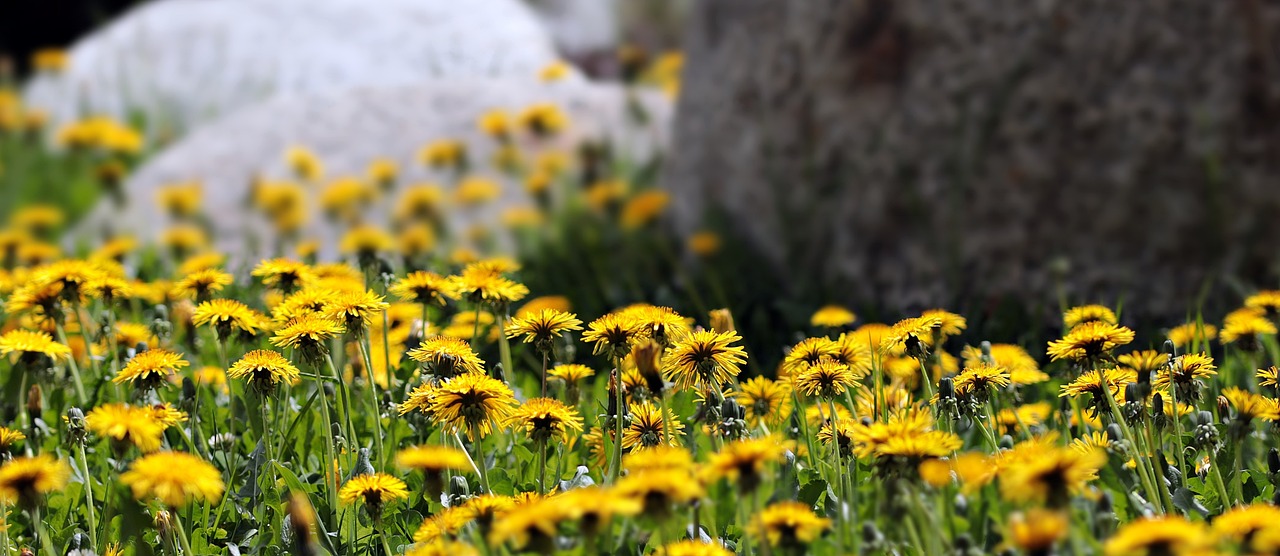IDENTIFICATION OF Taraxacum officinale Weber
Scientific name: Taraxacum officinale Weber
Italian common name: Dandelion – Dog’s tooth – Soffione (Showerhead) – Nonnino (Grandpa) – Wild chicory – Donkey chicory – Pork’s snout – Ingrassaporci (Pork fattener) – Brusaoci (Burn eyes) – Insalata di porci (Pork salad) – Pisciacane (Dog piss) – Lappa – Missinina – Piscialletto (Pee in bed) – Meadow sunflower – Grass del pig.
Family:Asteraceae
Origin: Central and Western Asia
Habit: Typical plant of temperate climates. In uncultivated fields and fertilized meadows throughout Italy. Widespread up to 2,000 meters. of altitude.
Evergreen or deciduous: Deciduous
VEGETABLE RECOGNITION OF
Taraxacum officinale Weber
Height: 10 – 30 cm

Width (extension): 10 – 30 cm
Habit: Perennial herbaceous plant
Leaf: simple, oblong, lanceolate and lobed leaves with toothed margin arranged in a basal rosette, whole or divided with triangular lobes, petiolate.
Flower: 2-4 cm wide “flower head” with bracts folded back like a calyx enclosing the receptacle from which hundreds of small flowers emerge that make up the intense yellow flower;
Flowering: April – May but also until autumn
Fruit: set of fruits (achenes) with a feathery beak (the whole forms the so-called pappus) from which the popular name of “dandelion” as the dispersion takes place thanks to the wind

Properties: laxative, purifying, detoxifying, diuretic
Perfume: insignificant
NEED
Maintenance: none
Exposure to light: Sun, Partial shade
Soil type:
it does not need particular soils, but prefers loose soil and open spaces
Soil acidity: indifferent
Italian climatic area: all

Water requirement: low
Diseases: mildew, mold, powdery mildew, downy mildew, rust and scab.
SPECIAL FEATURES:
It seems that Taraxacum can be distinguished from 35 to 57 different species, one of which in South America and one in Australia, but that in Italy there is Taraxacum officinale Weber. (treccani.it)
In mythology, the Dandelion was born from the dust raised by the chariot of Helios, God of sunlight, indicating all the LIGHT – DARK ambivalence of the remedy.
It is said that Theseus only ate Dandelion for a month before his adventure with the Minotaur. Dandelion therefore symbolizes nourishment, courage and audacity.
According to an Irish legend, the fairies hid in the dandelion when men arrived. (agopunturablog.it)
Annotations

The official name Dandelion comes from the Greek tarakhḕ “disruption”, and àkos “remedy”: remedy for disturbance due to its ability to put the body back in order.
The dandelion or P’u-Kung-ying is used, in phytotherapy, in Traditional Chinese Medicine as a depurative capable of purifying the “Heat”, eliminating toxins and dispelling the nodules, with hepatic (hepatitis) and gastric tropism.
“[…] Even etymologically, the question remains open whether the remedy for disturbance is such because it reduces or causes it. A clear indication of the magical virtues of this plant.” (to know more)
Choleretic, cholagogue and diuretic properties. Excellent ally for digestive problems to regulate bile flow and to stimulate diuresis.
A French saying states that dandelion “purifies the renal filter and dries up the liver sponge”.
The leaves are also available in herbal medicine.
The name Dandelion comes from the clearly visible teeth of the leaf margins.
It is liked by bees who obtain a monofloral honey from it.
In the kitchen
The young leaves are harvested in spring to be used raw in salads. For soups, fillings and omelettes they are good cooked. The roasted root was used instead of coffee. The flower buds are preserved in oil or in brine where they can replace the capers.
The leaves and root contain many bioactive substances such as steroids, flavonoids, vitamins B1, B2, C and E etc. (for a list you can find everything here)
You can really collect it anywhere, perhaps with the root to make it a useful corner in the garden or in a vase.
Now on horseback! Work awaits us! Our new wonderful outdoor space is about to be born!
GOOD WORK and…if you have any questions, write to info@ilmondodelgiardino.com
Image sources: thanks to Pixabay and many thanks for the lawn to NoName_13 and for the lawn Bruno Germany; for the plant to Erstmal_Pause; for the flower to Peggychoucair; for the leaves to Hans; for the Achenes to Alexa; for seeds to InspiredImages; for flowers in the sky to Frauke Feind.



